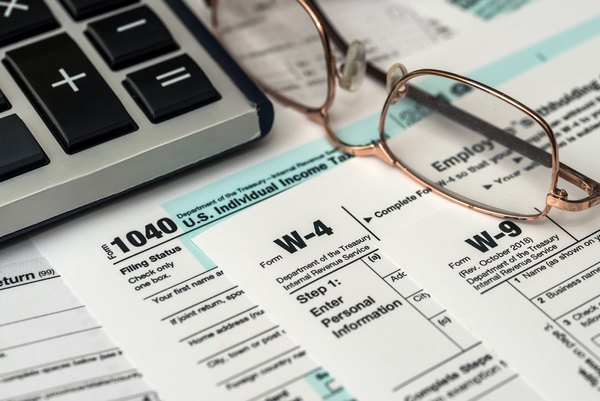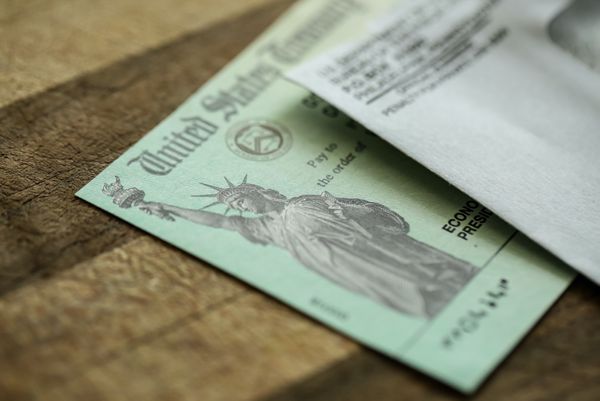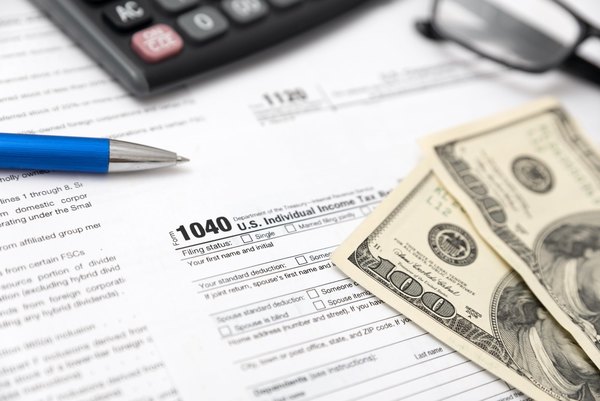When you start working for a new employer, you'll be asked to complete a W-4 form before you can receive your first paycheck. This form determines the amount of taxes the employer sets aside from your paycheck to pay your federal taxes.
Ultimately, it will impact your tax refund – or tax liability – for the fiscal year. In the best case, you'll withhold just enough so that you meet your tax liability but don't underpay.
Predicting how much tax you'll owe can seem overwhelming, but if you understand the form better, you can accurately complete your W-4 withholding to give you the results you want at tax time.
Calculate Your Income
Figuring out how much to withhold from your paycheck means knowing how much you expect to make. If you're on an annual salary, it's much easier to figure out your withholding. You can use an online calculator to help you figure out a close estimate of what you'll owe.
If you are paid by the hour, on commission, or gig (such as freelancing), this step isn't as straightforward. Instead, you'll need to look at your income history. Take the last two years as an example – if they seem similar to the current year, use that as a baseline. You can also use the average of the last two years to figure your current income and make any adjustments that you think are necessary, whether you're on course to make more or less this year.
Calculating the Right Withholding
Once you know your income, use the IRS's Tax Withholding Estimator to determine what you should claim. You'll need the following information to use it:
- Your most recent pay stubs
- All information for other sources of income
- Your most recent income tax return
The more accurate the information you put in the calculator, the more accurate the results will be. You can play around with the numbers, including the number of dependents you claim, to see how it will change your withholdings.
If you want even more accurate answers, you can play around with tax preparation software – most companies allow you to complete a tax return free of charge until you submit it. This way, you can play around with the numbers and see where you end up regarding the number of withholdings to take.
What Happens If You Don't Withhold Enough?
In the US, our tax system is pay-as-you-go. In other words, you are expected to pay taxes as you get paid. If you work for someone, they pay the taxes on your behalf from the funds they deduct from your paycheck.
If you underpay, you may be subjected to penalties if you pay the lesser of the following:
- You pay less than 90% of your tax owed for the year
- You pay less than 100% of your tax liability from the previous year
If your taxes owed are more than $1,000, you'll owe a penalty fee, which you can determine by completing IRS Form-2210.
What Happens if you Withhold Too Much?
On the other hand, if you overpay throughout the year, you are in a better situation, at least with the IRS. You won't be subject to any penalties; instead, you'll receive a refund of the overpayment after you file your taxes.

You Can Make Changes to Your W-4 Withholding
What many people don't realize is that you can change your W-4 withholding at any time. In fact, it's a good idea to review your W-4 withholding periodically, at least once a year. Figure out where you stand by using the IRS Tax Withholding Calculator. If you find that you're behind, you can decrease your dependents and have more taken out of your check.
If, on the other hand, you find yourself paying more than is necessary, you can adjust the other way, keeping less money from your paycheck and putting more money in your pocket.
Figuring Out Your Withholding Allowances
Figuring out how many allowances you should take isn't a guessing game. The Personal Allowances Worksheet helps you determine what you should claim. There are allowances for all of the following:
- An allowance for yourself as long as no one else can claim you as a dependent
- An allowance for filing married filing jointly
- An allowance if you file head of household
- Allowances for each child (dependent on your income)
- Allowances for other dependents
Once you total up your allowances, you then decide if you'll take the total number of allowances offered or if you'll decrease the number to take more taxes out of your check.
It's a Fine Balance
While it's natural to want a bigger paycheck by claiming more allowances, don't get carried away. You could find yourself with a big tax bill at the end of the year, including penalties. It's important to know where you stand with your tax liability throughout the year.
Figuring out your W-4 withholding is essential. Even if you are at the same job you've been at for years, take the time to do a quick checkup each year. It will help you avoid tax penalties and see that you're still on track to keep up with your tax liabilities while not overpaying the government more than necessary.






